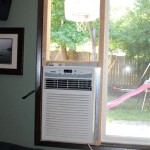How to Dry Out a Basement: A Comprehensive Guide
A wet or damp basement can be a frustrating and potentially hazardous problem. Excess moisture can lead to mold, mildew, and other health concerns, as well as damage to your belongings and the structural integrity of your home. Fortunately, there are several effective methods to dry out a basement and prevent future moisture problems.
Identify the Source of Moisture
Before taking steps to dry out your basement, it's crucial to determine the source of the moisture. Common sources include:
- Leaks from plumbing pipes or fixtures
- Groundwater seepage
- Condensation due to high humidity
- Flooding from heavy rain or storms
Remove the Source of Moisture
Once you've identified the source of the moisture, taking steps to eliminate it is essential. This may involve:
- Repairing leaky pipes or fixtures
- Installing a sump pump to remove groundwater
- Using a dehumidifier to reduce humidity
- Grading the soil around your home to prevent water from pooling near the foundation
- Installing a French drain to redirect water away from your basement
Dry Out the Basement
Once the source of moisture has been removed, you can begin the process of drying out your basement. Several methods can be used, including:
- Ventilation: Open windows and doors to allow fresh air to circulate and remove moisture.
- Dehumidifier: Use a dehumidifier to remove excess moisture from the air.
- Fans: Place fans around the basement to circulate air and speed up the drying process.
- Wet/Dry Vacuum: Extract standing water using a wet/dry vacuum cleaner.
Prevent Future Moisture Problems
Once your basement is dry, it's important to take steps to prevent future moisture problems. Consider the following:
- Regular Maintenance: Regularly inspect your home for leaks or other potential sources of moisture.
- Moisture Barriers: Install vapor barriers in walls and floors to prevent moisture from entering.
- Proper Drainage: Ensure proper drainage around your home by grading the soil and cleaning gutters.
- Insulation: Insulate your basement walls and ceiling to reduce condensation.
Additional Tips
- Move any wet or damp items out of the basement to prevent mold growth.
- Wear protective gear, such as a mask and gloves, when cleaning up mold or mildew.
- Consider contacting a professional basement waterproofing company if you're unable to resolve the issue on your own.
- Monitor the humidity levels in your basement regularly to ensure they remain within an acceptable range.
Conclusion
Drying out a basement can be a challenging task, but it's essential for the health and integrity of your home. By identifying the source of moisture, taking steps to remove it, and implementing preventive measures, you can effectively dry out your basement and prevent future moisture problems.

How To Dry Out A Wet Basement Fast 970 Services

Tips For A Dry Basement Greenbuildingadvisor

Q A Drying Out Water Damaged Basement Addressing Issues

8 Ways To Dry Out A Damp Basement

How To Dry Out A Room After Flood And Water Damage Restoration

Ways To Dry Out A Damp Basement Plumber In Atascadero Ca

How To Dry Out A Room After Leak Timberwise
How To Dry A Flooded Basement Yourself

Fast And Effective Ways To Dry A Basement After Flood Wikihow
How To Dry A Flooded Basement Yourself
See Also








